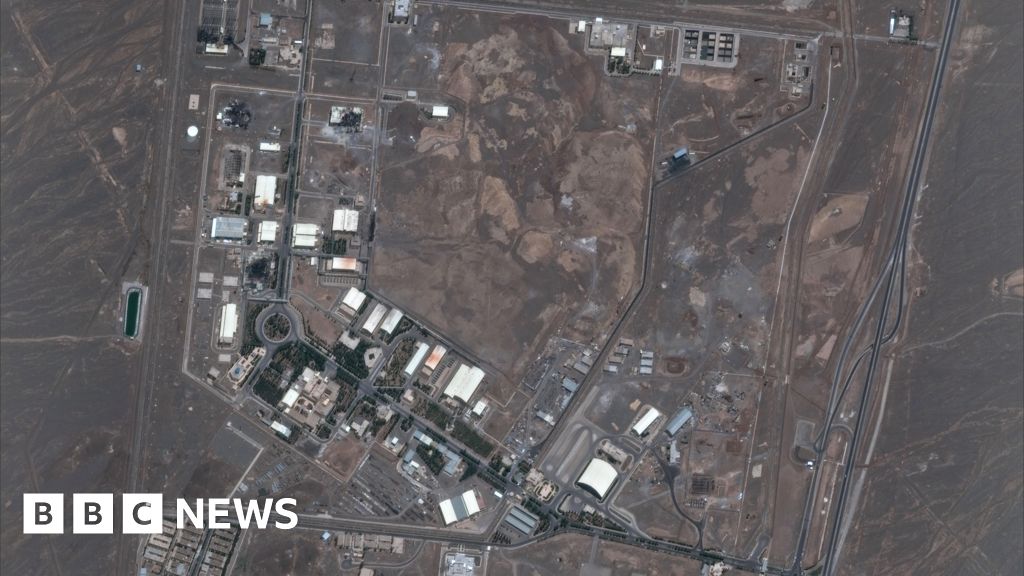BBC News Science Team
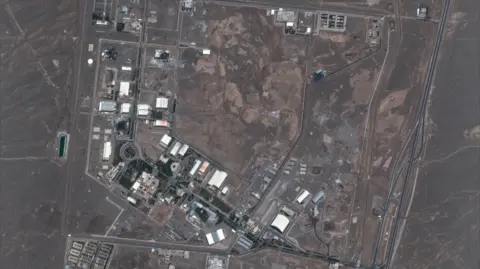
Getty Images / Maxar Technologies.
US warplanes recently struck three nuclear sites in Iran, mirroring Israeli targets in its ongoing conflict with the nation.
One primary facility was Fordo, a clandestine uranium enrichment site located in a mountainous region critical to Iran’s nuclear goals.
Nuclear facilities at Natanz and Isfahan were also affected.
While the extent of the damage remains unknown, the UN’s nuclear watchdog reported “no increase” in radiation levels off-site.
What do we know about these sites’ significance, and what are the potential hazards associated with targeting nuclear installations?
The IAEA has voiced serious concerns over Israel’s military actions targeting Iran’s nuclear sites.
Director General Rafael Grossi stated that heightened military tensions increase the risk of a radiological incident, potentially harming both people and the environment.
Uranium enrichment facilities are crucial for accumulating a specific isotope of uranium.
As Professor Paddy Regan from the University of Surrey explains, when mined, uranium largely consists of uranium-238 (99.3%) and a small fraction of uranium-235 (0.7%), which is essential for nuclear reactors.
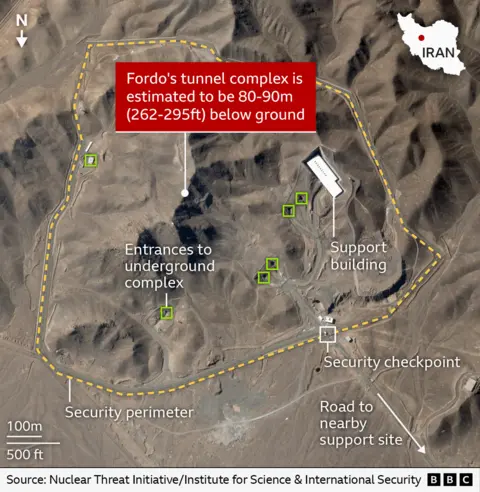
Energy Explosion
Nuclear enrichment effectively involves amplifying the amount of uranium-235 available.
This is achieved by converting uranium into a gaseous form and spinning it in centrifuges, as explained by Prof. Regan.
Uranium-238, being denser, separates from uranium-235 during this spinning process, which is carried out repeatedly to enhance enrichment levels.
Nuclear reactors generally require enriched uranium at a concentration of 3-5% for a controlled reaction that generates energy.
Conversely, to construct a nuclear weapon, a much higher enrichment level of about 90% is necessary.
In essence, the more enriched the uranium, the larger the explosive energy released upon nuclear fission.
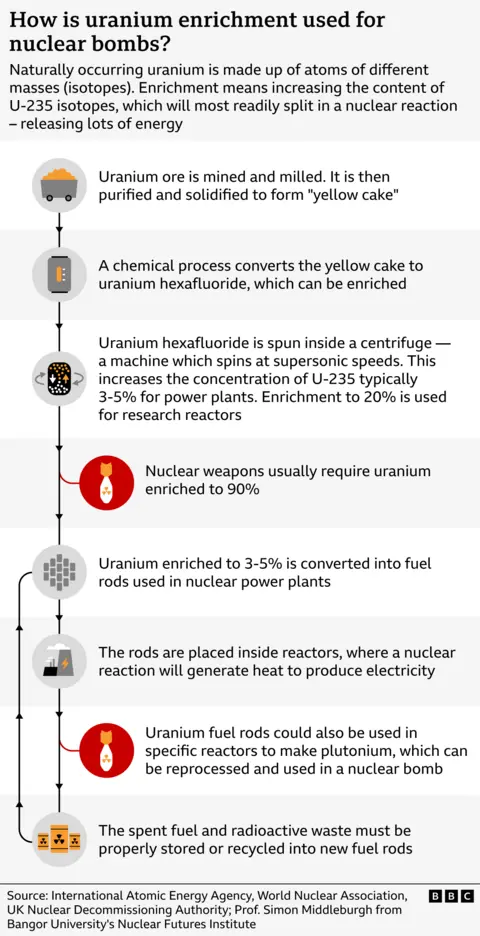
The IAEA noted that Iran’s uranium enrichment had escalated to about 60%, nearing levels sufficient for weapons-grade material.
However, an attack on well-secured enriched uranium stockpiles would not trigger a “nuclear incident” comparable to the catastrophes at Fukushima or Chernobyl.
While highly enriched uranium is approximately threefold more radioactive than its non-enriched counterpart, the overall radioactivity levels are not extremely high. Thus, a significant environmental contamination issue would be unlikely,” explains Professor Jim Smith from the University of Portsmouth, who has examined the aftermath of Chernobyl.
Concerns are more about fission products—substances produced when uranium undergoes nuclear reactions, such as radioactive caesium and iodine—which present a greater environmental contamination risk.
Since no nuclear reactions occur at enrichment sites, a blast would not release these hazardous fission products.
Instead, uranium may be spread locally as a result of an explosion.
Localized Risks
The IAEA reported “no increase in off-site radiation levels” following the US strikes. After Israel’s attack on Natanz, radioactive contamination was detected, yet off-site radiation levels remained consistent and within normal limits.
“Uranium radiation has a limited range in terms of travel,” notes Professor Claire Corkhill, Chair in Mineralogy and Radioactive Waste Management at the University of Bristol.
However, health risks could affect those living in proximity to the site.
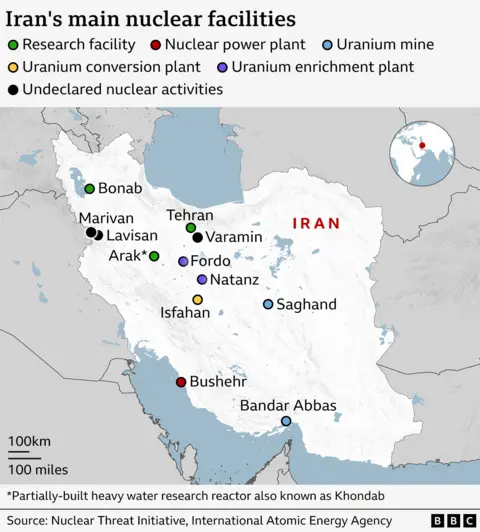
“In terms of human toxicity, inhalation or ingestion of uranium particles is very dangerous,” she remarked.
“These particles can stay lodged in cells within the lungs or stomach, gradually decaying and causing damage over time.”
Beyond radioactivity, potential chemical exposure poses risks for individuals nearby.
“Should an incident occur and uranium hexafluoride escape the centrifuges, it would lead to a severe chemical hazard,” Professor Simon Middleburgh, a nuclear materials expert at Bangor University, explained.
“When uranium hexafluoride interacts with moisture, it generates extremely corrosive acids,” he highlighted.
“However, its broader environmental repercussions would remain minimal and localized.”
The IAEA confirmed that its Incident and Emergency Centre is monitoring the situation continuously, pledging to provide updates as new information arises.

